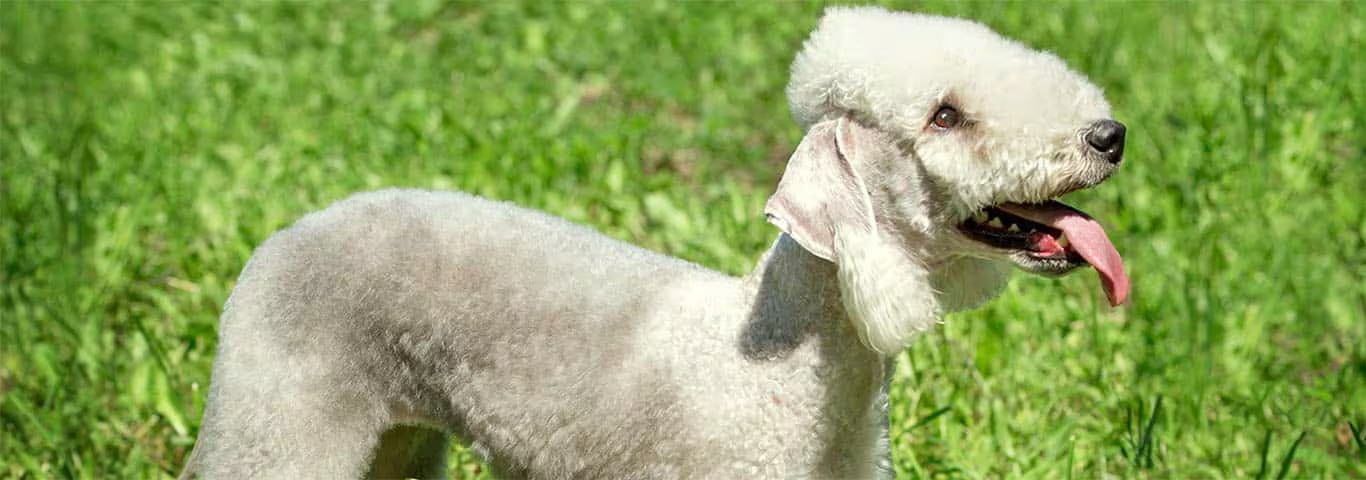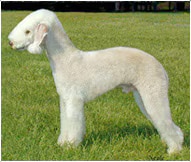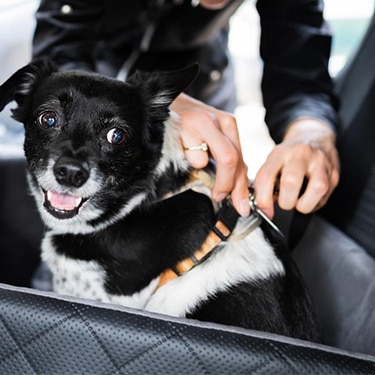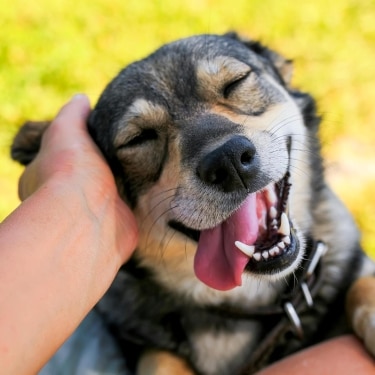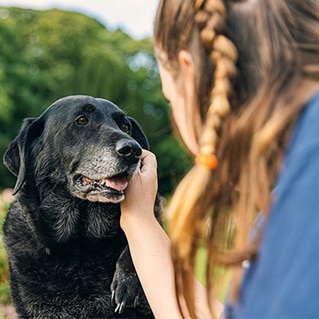Its most distinguishing features are its pear-shaped, tufted head, curly coat, arched back, lithe stature, and graceful, springy gait. The head is narrow, deep and rounded, the jaw longer than the skull. The slender muzzle has a distinctive Roman arch. The triangular ears, which hang flat against the cheeks, have whimsical, "cotton-puff" tips. The long, tapering neck stands high atop a muscular and flexible body. The chest is deep, the tail set low and tapering, and the front legs straight with hare-like feet. Females measure 15 1/2 inches at the withers, and males measure 16 1/2 (males) inches at the withers, and the dog weighs 17 to 23 pounds (eight to 10 kilograms).
The pliant, curly coat is a unique mixture of hard and soft hair that conceals the bone structure on the muzzle and front legs, where it thickens. The coat colors are blue, sandy, liver, tan, blue and tan, and sandy and tan. Today, the blue color is fashionable and more prevalent than the others.
The Bedlington is blithe, playful and generally loyal to its owners, friendly to strangers and loving to children. Courageous, energetic and headstrong, the dog is a fierce fighter that rarely backs down from a challenge. Despite its friendly appearance, the Bedlington can be unwelcoming toward cats and other household pets, unless adapted to them at an early age. Bedlingtons like to bark, dig and chase.
Active dogs, Bedlington terriers are swift runners that need ample exercise. Without sufficient recreation opportunities, the Bedlington is prone to boredom and mischievous behavior. The are suitable indoor dogs, even for apartment dwellers, as long as adequate exercise is provided. The Bedlington sheds little to no hair and requires specialized clipping every six weeks. The novice owner can learn how to clip the coat at home. Considered a "hypoallergenic" breed, the Bedlington is considered an acceptable pet for the typical allergy sufferer.
The Bedlington terrier emerged in the parish of Bedlington in Northumberland, England in the early 19th century. Originally known as the Rothbury Terrier, after the namesake district on the English coast, the breed was prized by gypsy nail makers as a hunter of foxes, hares, badgers and rats. In about 1825, a Rothbury dog was mated to a Bedlington bitch to produce the Bedlington terrier. The otter hound and the Dandie Dinmont terrier are also thought to have contributed their genes to the breed.
As a vermin hunter, the plucky Bedlington terrier was a fearless combatant. The dog was also used by the hunters as retrievers. Over time, the terriers were welcomed into homes of the elite, who valued them as well-behaved, first-class companions.
The present-day Bedlington, which was inducted by the American Kennel Club in 1967, is larger in stature than its earlier counterparts.
Adopt a pet. Change a life.
Are you prepared to adopt a pet? Use these tools to make sure you are ready for the commitment.
Adopt a pet. Change a life.
Are you prepared to adopt a pet? Use these tools to make sure you are ready for the commitment.












